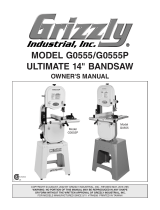Page is loading ...

Revision 12-2018
For More Questions & Concerns Please Call: (800) 628-8815
Installation Instructions & Applications for Field Fence
FarmGard® multi-purpose Field Fence is up to the challenge of corralling livestock such
as cattle, hogs, sheep, and ratites (large, flightless birds). Special expansion crimps
enable this product to expand and contract with weather changes and to stretch to
conform to land contours. Graduated height of vertical wire openings prevents animal
hooves from stepping through. 12.5 or 11 gauge fill wire and 10 or 9 gauge top and
bottom wires to minimize sagging. Hinged wire construction adds strength and flexibility.
3 wraps on top and bottom wires for maximum strength. Available in 32”, 39”, and 47”
heights; 330’ and 132’ lengths; Class 1 or Class 3 Galvanized zinc coating for extended
life.
The Hinge Joint is the most common knot in agricultural fencing, found on
both low carbon and high tensile products. The knot is formed by wrapping
the vertical stay wire pieces around the line wire at each intersection. This
design can also absorb animal impact without damage and is the most
economical knot choice available. A Hinge Joint is used on the top and
bottom wires of our Field Fence.
Tools Recommended: Gloves, wire cutters, fence stretcher, T-Post clips and fence
staples, hammer, protective eyewear, come-along, chain link.
This guide proceeds with the assumption that the fence posts and corner braces
are already installed and ready for installation of the FarmGard Field Fence. The
line posts can either be round wood posts, or T-Posts. The end and corner brace
posts will be a minimum of 6 to 8 inch round wood posts and will bear the tension
of the Field Fence; the line posts will provide support along the fence.
1. With the fencing framework in place, start at one end of the fence and roll
out the Field Fence along the side of the fence. Note that the Field Fence
will be inside of the fence posts facing the animals, not outside of the
posts.
2. Ensure that approximately 2 feet of Field Fence overlaps at each end so
that it may be fastened to the wood brace posts.
3. Starting at one end, cut and remove 4 to 5 vertical pickets. This will leave 24 to 30 inches of loose horizontal
wire to wrap around and secure to the corner or end brace post.
Do the same at the other end.
4. With the pickets removed, wrap the loose ends of the Field
Fence horizontal wires around the end or corner brace post.
Wrap the wire onto itself and secure with fence staples.
5. Moving along the fence, lift the Field Fence up as you go until
you reach the other end. The Field Fence will loosly rest on the
wood line posts or T-Posts.
6. Connect a fence stretcher to the other end of the Field Fence.
Connect the fence stretcher to a come-along. This is typically accomplished with using heavy chain
link. The come-along needs to be secured to the brace posts or other secure object.
7. Use the come-along to increase the tension in the Field Fence. The fence will begin to
straighten and stand upright along all the fence posts or T-Posts.
8. Secure the end of the Field Fence by wrapping the loose ends of the Field Fence
horizontal wires around the end or corner brace posts. Wrap the wire onto itself and
secure with fence staples.
9. Secure the rest of the fence using fence staples for wood posts, or T-Post Clips with T-Posts.
10. Remove the come-along and fence stretcher.
/



